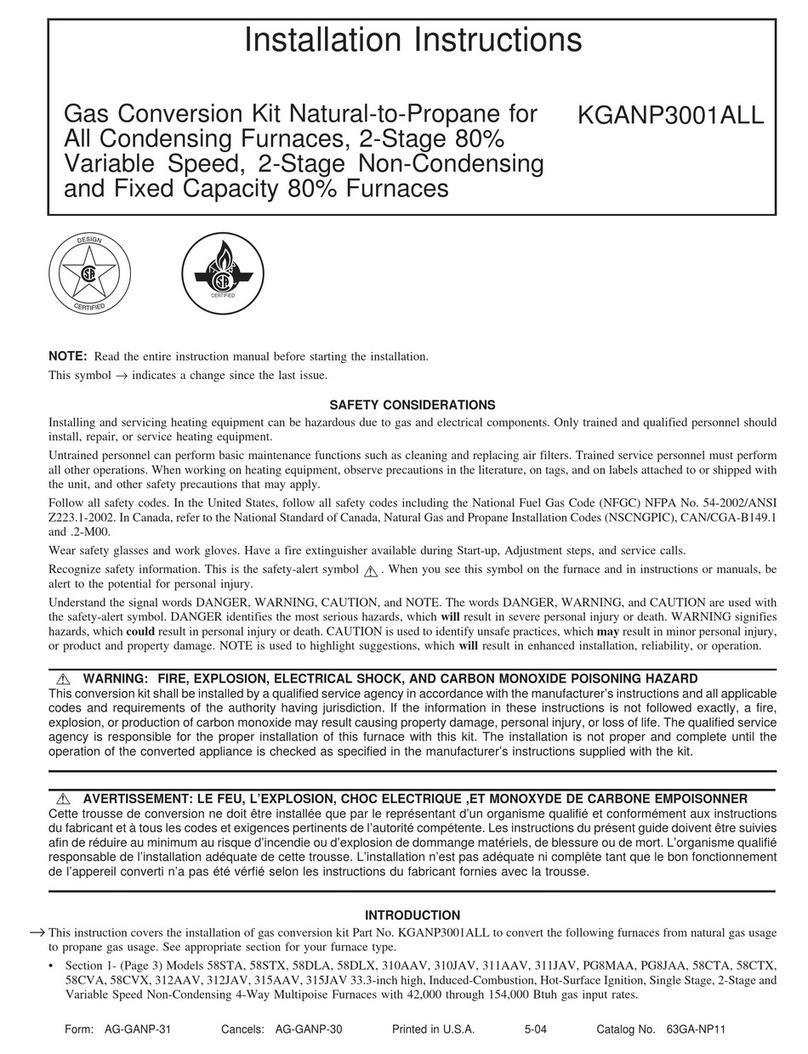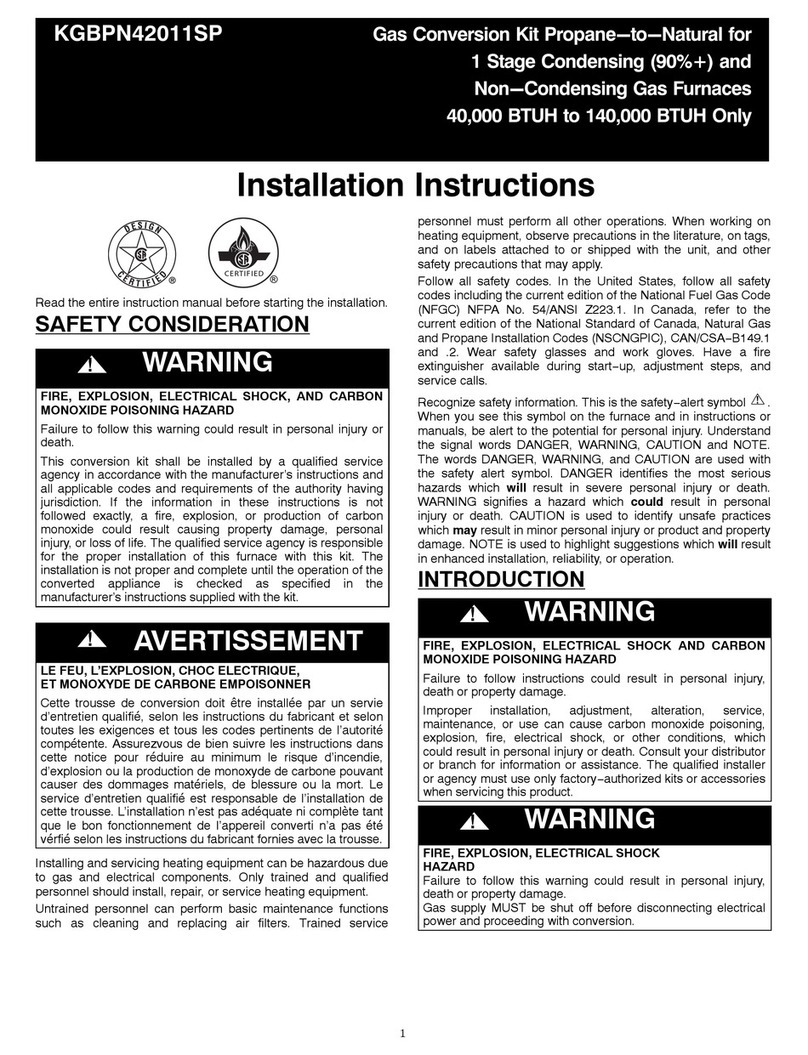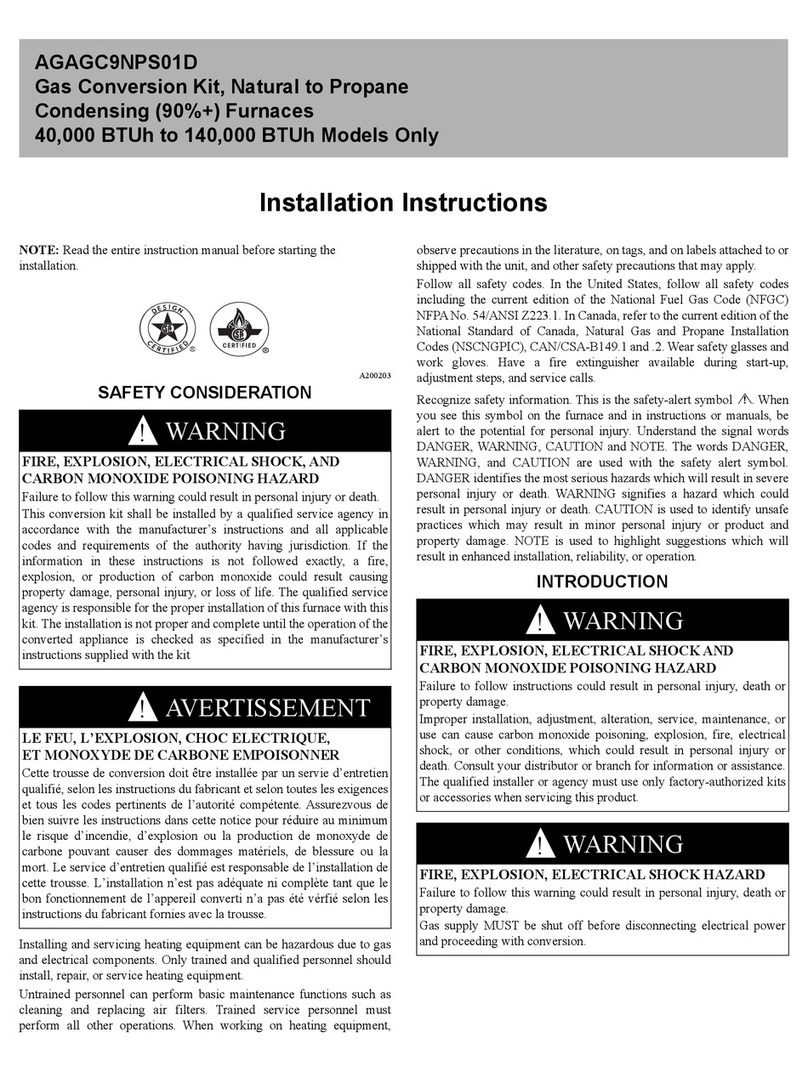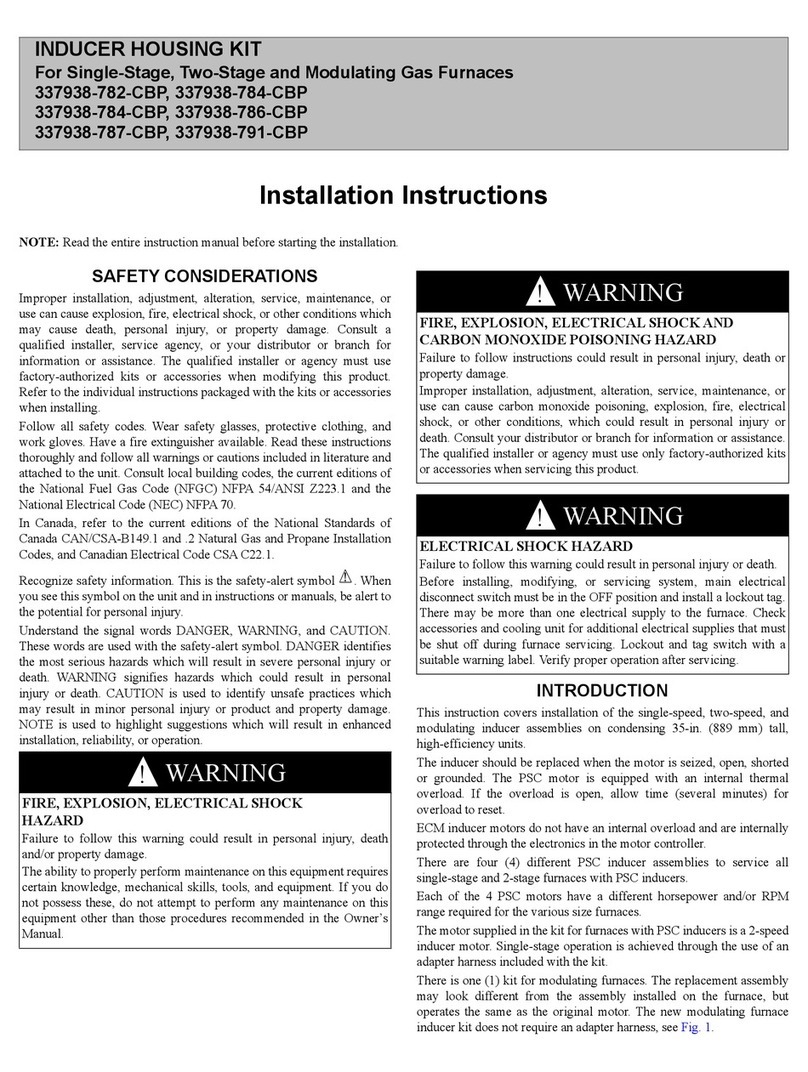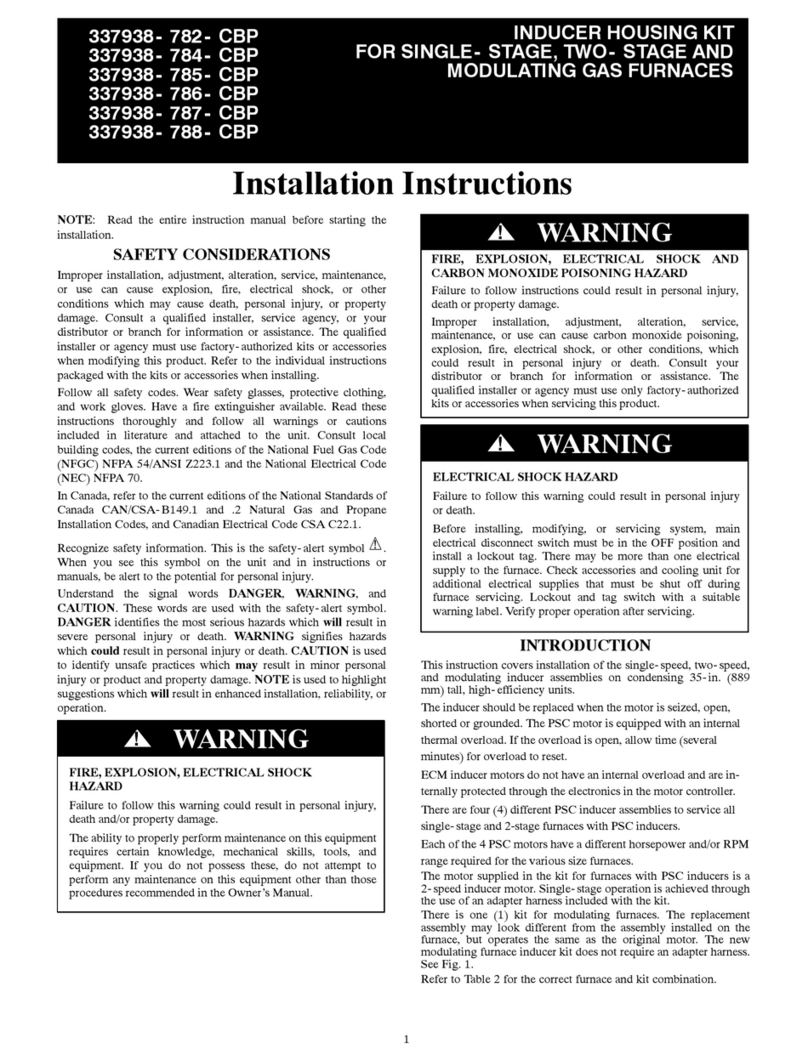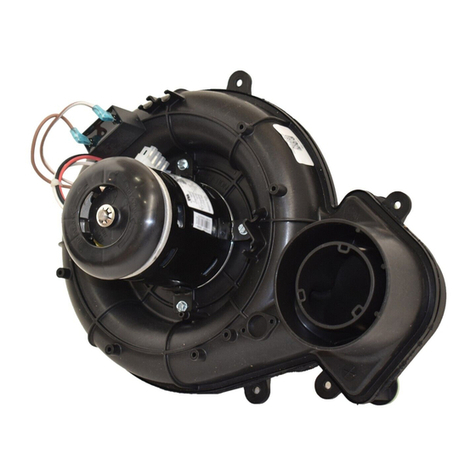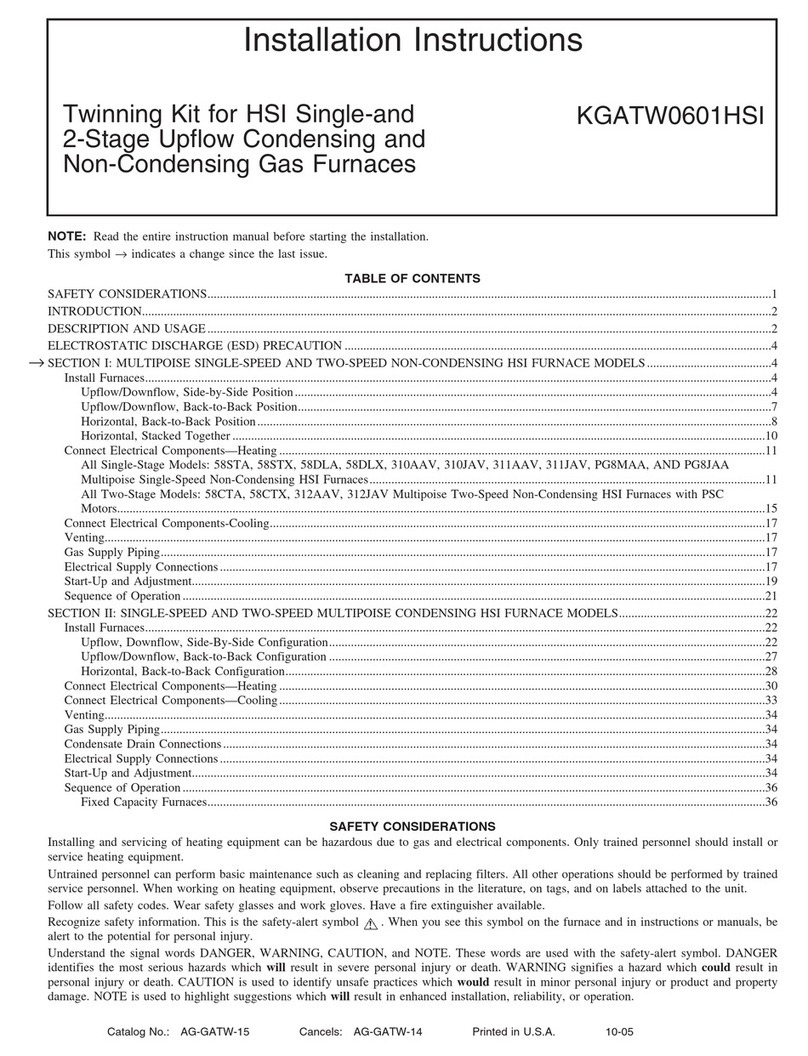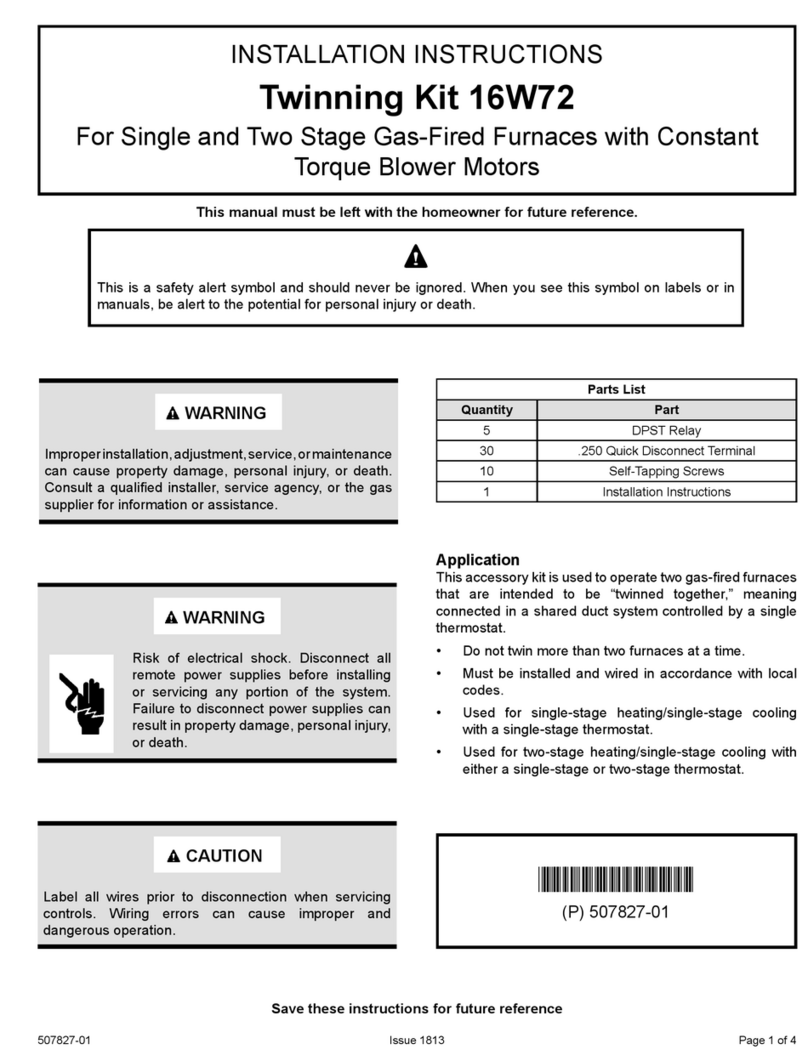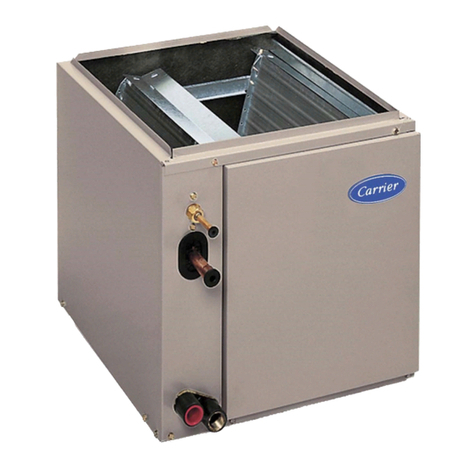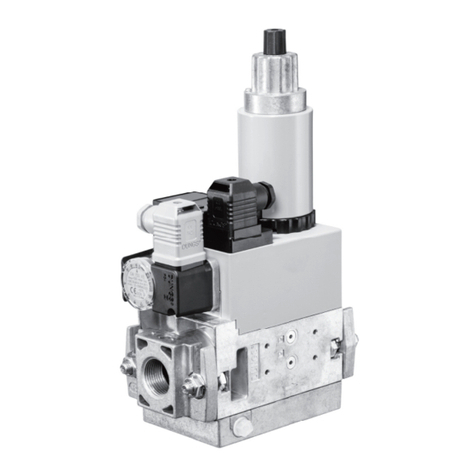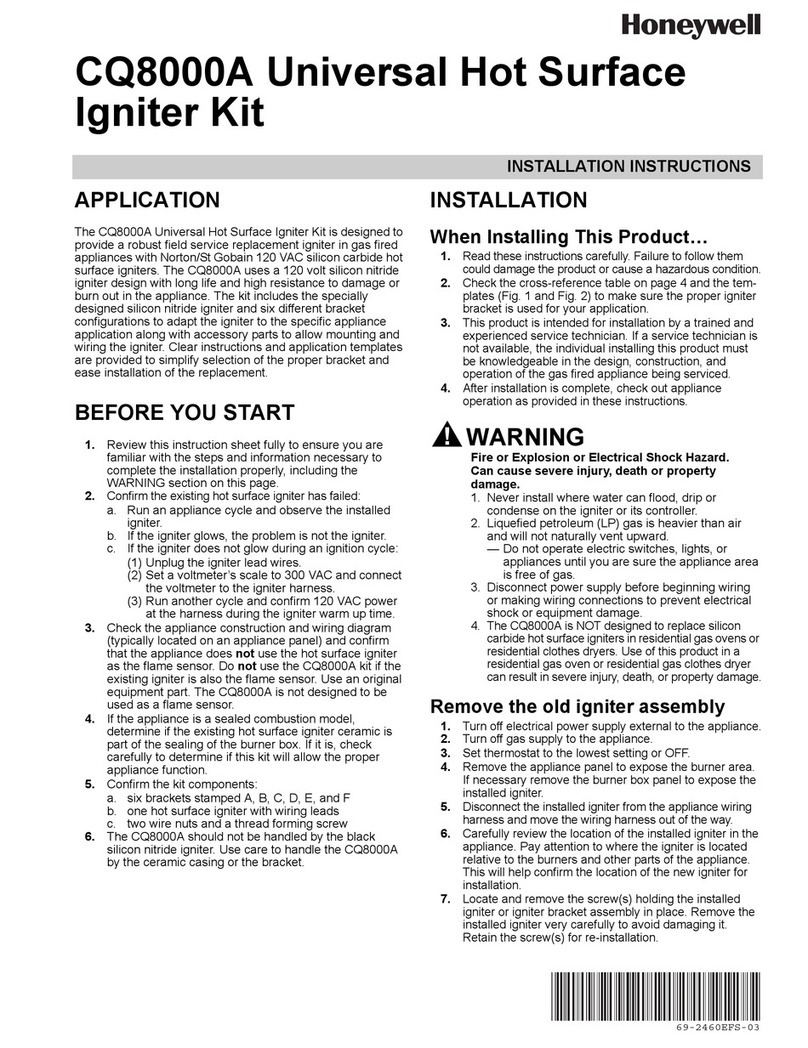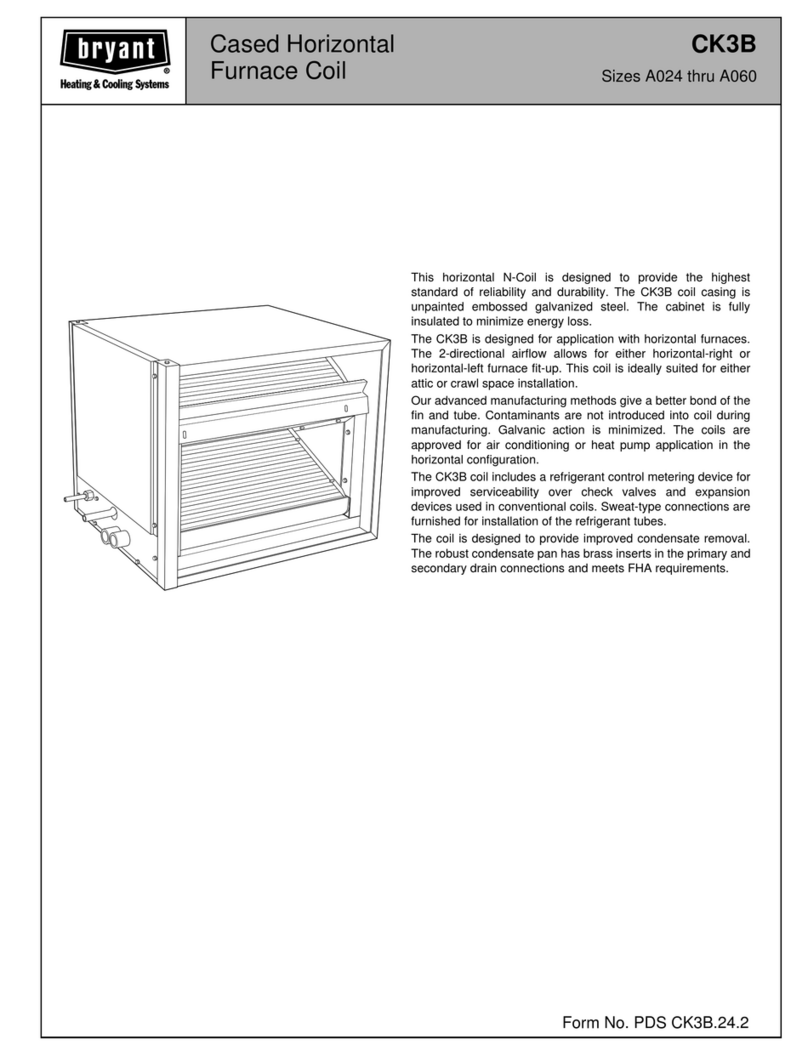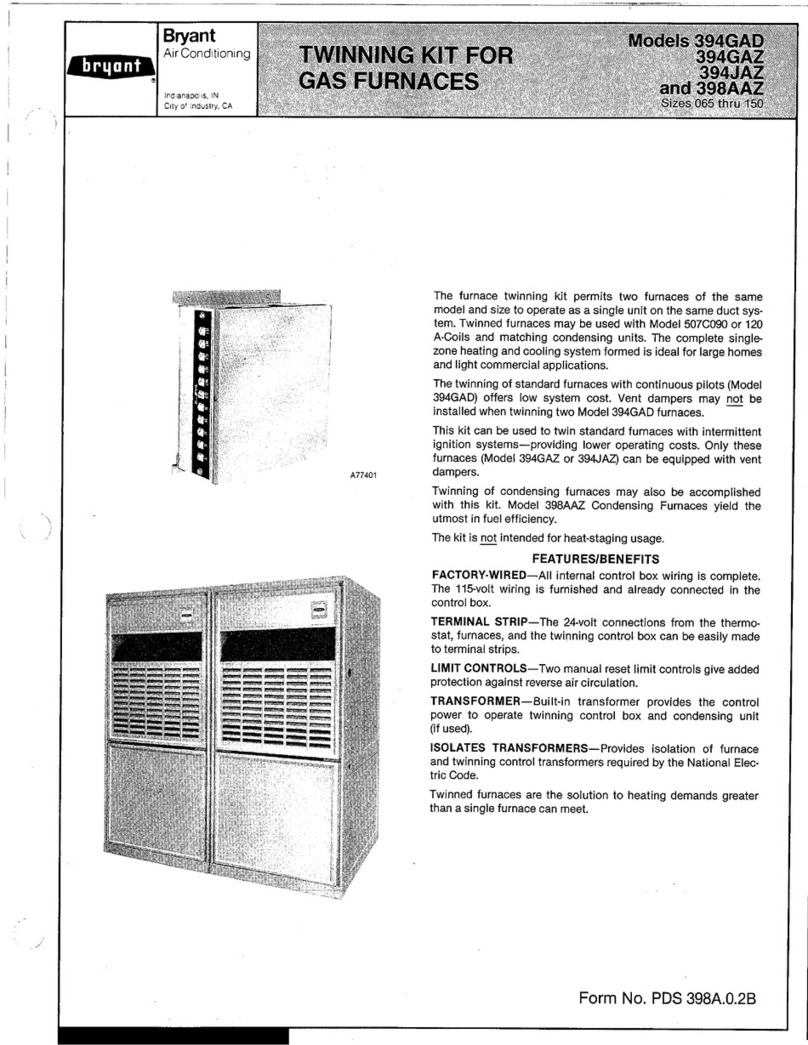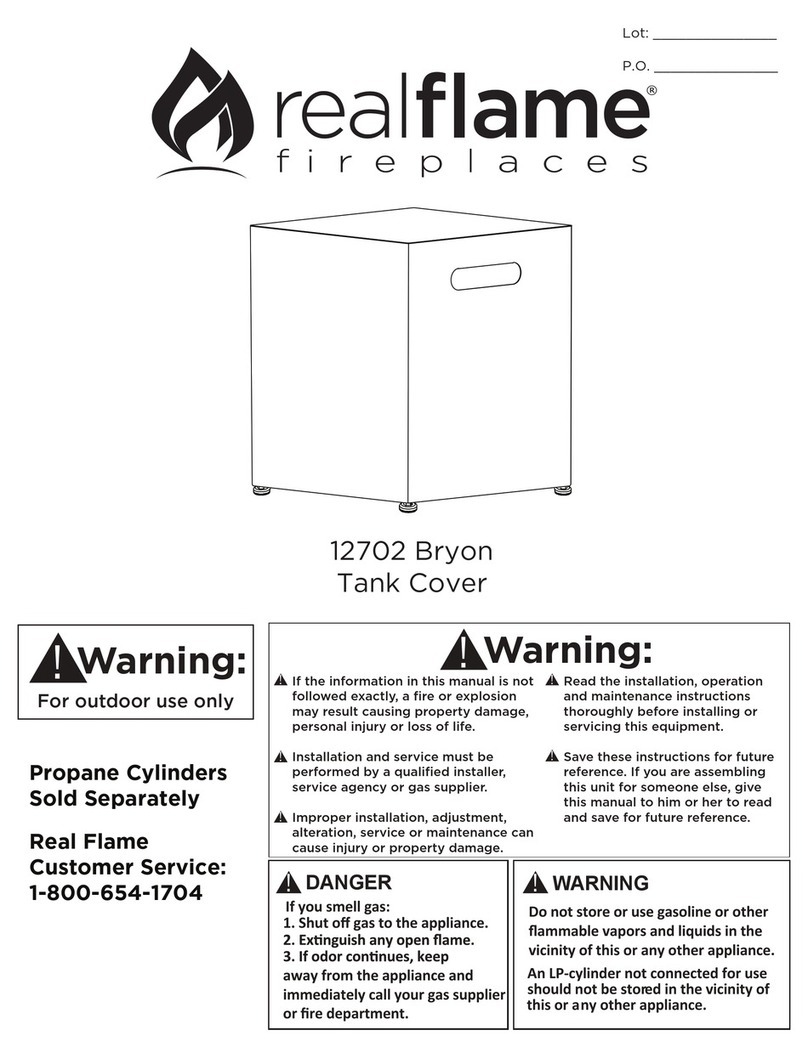
2
FIRE, EXPLOSION, ELECTRIC SHOCK, AND
CARBON MONOXIDE HAZARD
Failure to follow this warning could result in personal injury,
death, or property damage.
This conversion kit shall be installed by a qualified service
technician in accordance with the Manufacturer’s instructions
and all applicable codes and requirements of the authority
having jurisdiction. The qualified service agency is
responsible for the proper installation of this kit. The
installation is not proper and complete until the operation of
the converted appliance is checked as specified in the
manufacturer’s instructions supplied with the kit.
!WARNING
General Information
This kit is for conversion of furnaces equipped with Honeywell
VR8205S Series 2--stage gas valves certified for use with Natural
Gas (and so marked) to units functionally the same as the certified
furnace for use with Propane Gas. Before the furnace can be
operated with Propane Gas, the Propane low pressure switch must
be installed. A gas valve conversion kit must be installed and main
burner orifices must be replaced with properly sized orifices.
The orifices provided in this kit are stamped to indicate the size
(twist drill number) and are sized for commercially pure propane
gas ONLY. Do NOT use them with butane or a mixture of butane
and propane gas. The parts list specifies the size orifices supplied in
the kit. Compare the size marking on the orifices with the sizes as
listed in the parts list. Make sure you have the correct main burner
orifices.
Extreme care is used to assure that this kit contains the proper
orifices. Oversized orifices could result in hazardous conditions,
especially if the venting is inadequate. For that reason, we
recommend that the installer check the size of the orifice with a
new twist drill of the correct size. This procedure assures that the
orifices provided are the correct size.
Installation
ELECTRIC SHOCK, FIRE, AND EXPLOSION
HAZARD
Failure to follow this warning could result in death, personal
injury, property damage and/or equipment damage.
Turn OFF gas supply at manual gas valve before turning OFF
electric power supply and starting conversion.
Turn OFF electric power supply at disconnect switch or
service panel before starting conversion.
!WARNING
Disassembly
A07838
Fig. 1 -- Disassembly
Refer to Fig. 1 and the following steps.
1. After disconnecting power and gas supply to the furnace,
remove the access door, exposing gas valve and burner
compartment.
2. Disconnect gas line from gas valve so manifold assembly
can be removed.
3. Disconnect wiring at gas valve. Be sure to note the proper
location of any and all electrical wiring disconnected.
4. Remove the screws holding the manifold and gas valve to
the manifold supports. Do not discard any screws.
5. Carefully remove the manifold assembly.
Main Burner Orifices
1. Remove the Natural gas burner orifices from the manifold
assembly and replace them with the appropriate Propane
(silver) orifices furnished in the conversion kit (Fig. 2),
unless converting a high altitude unit, then see Table 1 for
appropriate orifices.
A07839
Fig. 2 -- Remove Orifices
2. Tighten the orifices so they are seated and gas tight about
1--1/8″(28.6 mm) from the face of the orifice to the back of
the manifold pipe (Fig. 3). Make sure orifice is installed
straight so that it forms a right angle (90°) to the manifold.
